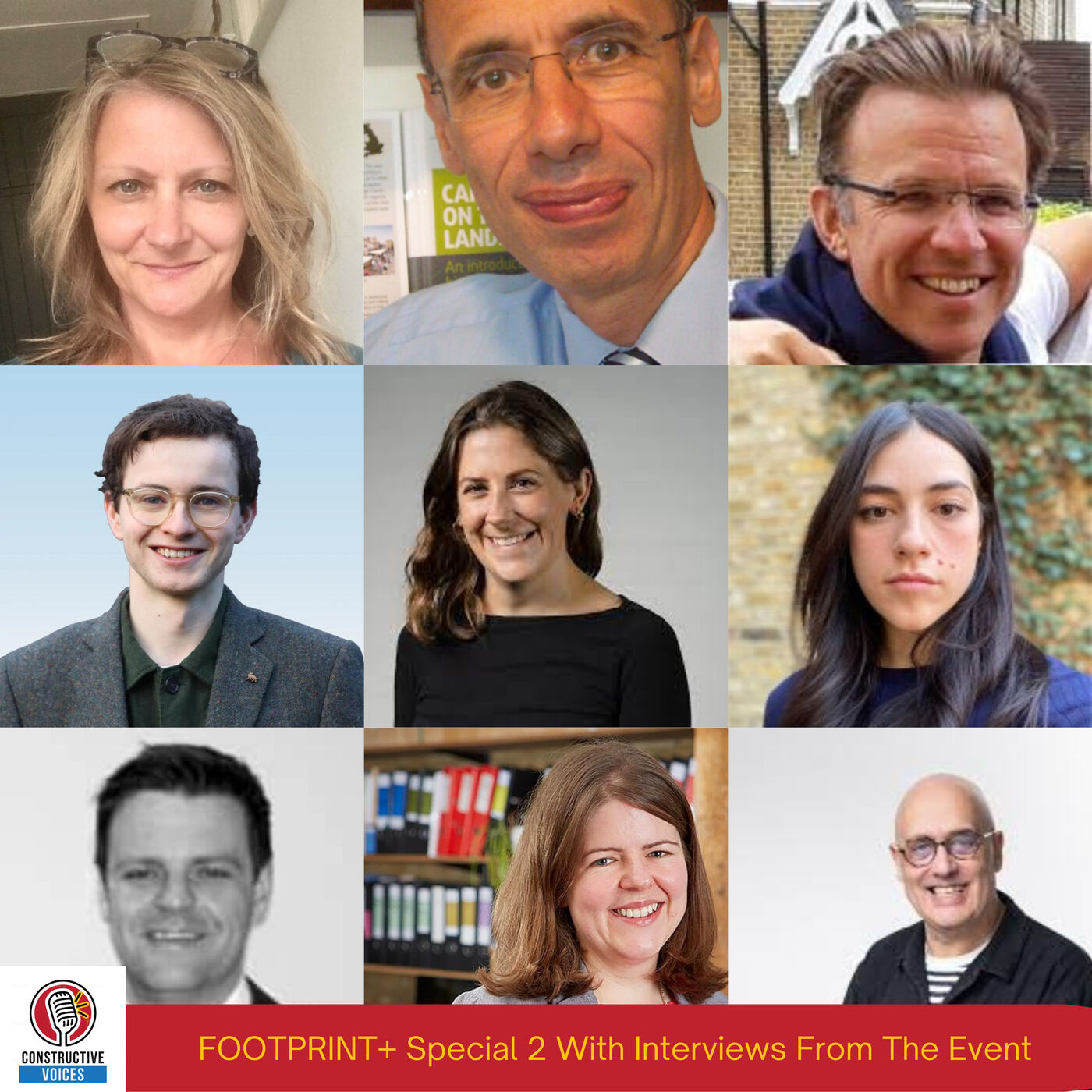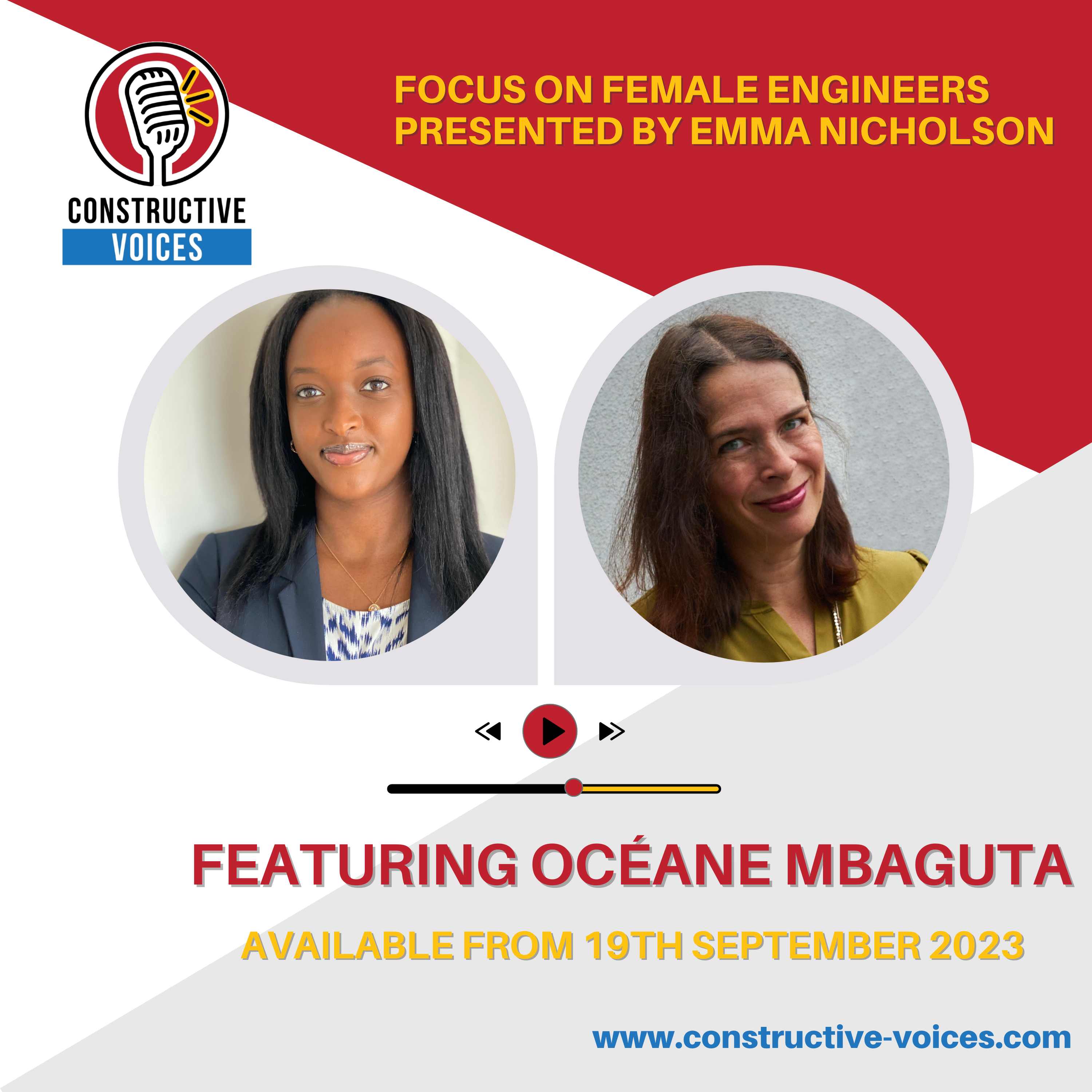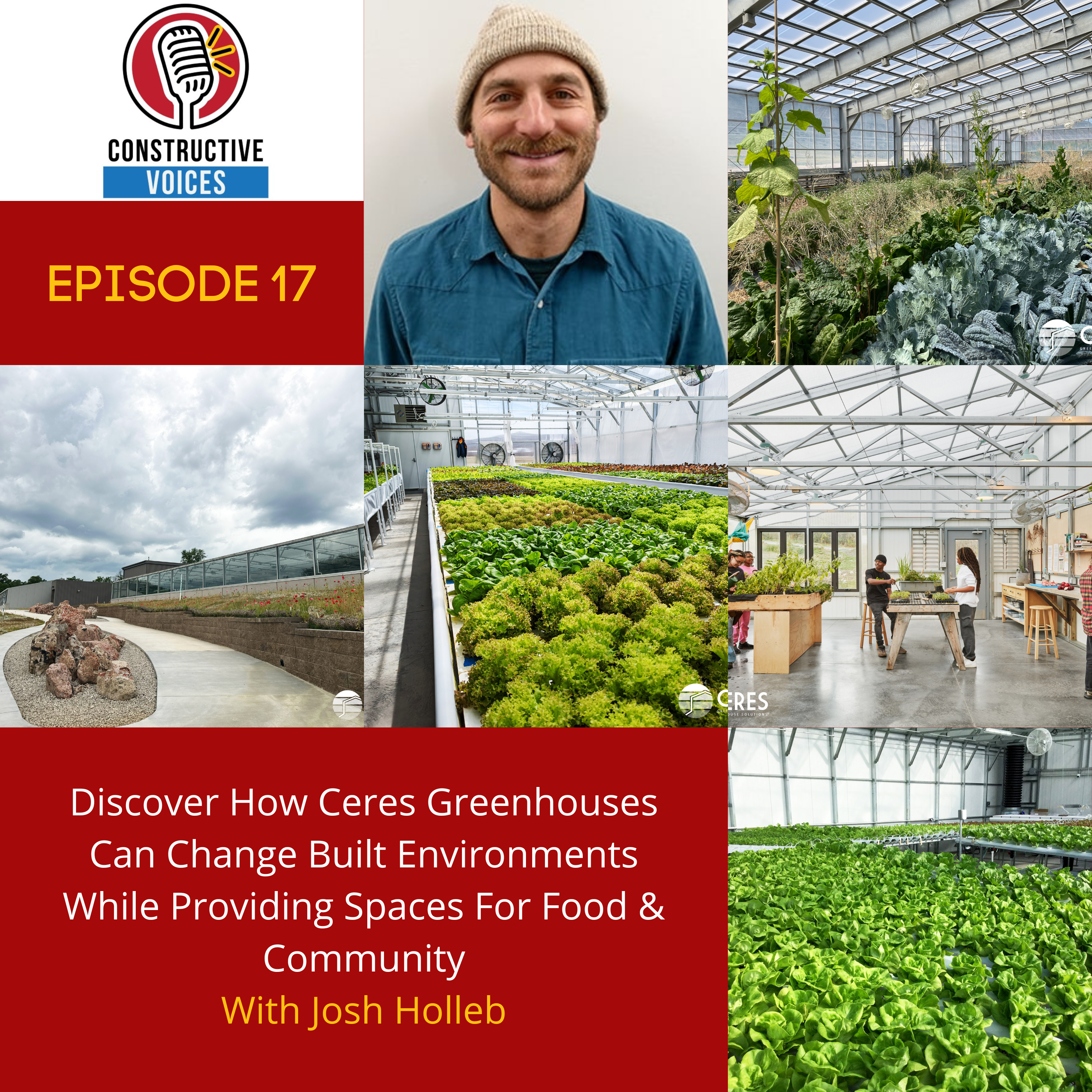Episode Transcript
[00:00:00] Speaker A: Constructive voices, the podcast for the construction people with news, views and expert interviews.
[00:00:08] Speaker B: Don't miss out on learning about a very useful biodiversity netgain tool. Today's guest is Panu Pasanen, the CEO and sole founder of Oneclick LCA, the world's leading software platform for life cycle assessment and environmental product declaration in construction and manufacturing.
Oneclick LCA has a presence in around 170 countries.
In this episode, Panu speaks to Jackie de Berka about their new biodiversity netgain tool.
[00:00:41] Speaker C: So this is Jackie Duberka here from constructive voices. And I'm really delighted to welcome back Panu, who was with us for a previous episode. Really, really interesting episode. If you didn't listen before, be sure, be sure to tune into that as the previous episode. Panu Pasanan, who is the CEO and founder of Oneclick LCA and everything you need to know about his company and what it can do is in the previous episode. So do check it out if you didn't listen already. But very, very recently, Panu, you've created a new tool, and we're going to talk about that in a lot more depth today. But first of all, can you introduce a little bit about yourself, your company and how you came to creating this new Bng tool?
[00:01:32] Speaker D: Yeah, sure. So I'm happy to show my name is Panu Pasanan. I'm finnish software engineer by education and how I came to create one click LCA was basically, I was looking for a way to do something that's very scalable to mitigate climate change and improve sustainable sustainability in the industry. And sort of a perfect storm came about which is building information models on one hand, very fragmented construction industry on the other hand. And then couple of leverage points that can be used to steer the construction projects towards a better performance direction. And we created one legacy out of that basically hypothesis. And we've been building the company towards first a european champion, let's say, in this field, and today world champion in construction and manufacturing lifecycle assessment. And yeah, that's what we've been doing and we keep on going.
[00:02:39] Speaker C: Fantastic. Now, so in your 14 year journey to date of your company, you have like talk about the word champion is probably very, very apt. You've now managed to have an impact in approximately 170 countries. So that's pretty amazing, obviously.
How did you come to get the idea of like, okay, there's a law that right now only has just come into place on the 12 February officially only in England.
And how did you come to think? Well, actually a tool around that would be very useful. And I'm referring to biodiversity net gain.
How does that come about? Padding.
[00:03:22] Speaker D: Yeah, sure. So having worked very long time on the topic of carbon in construction, so obviously we are aware it's not the only environmental or sustainability challenge construction has. So there are a lot of issues with circularity, with waste and biodiversity. Biodiversity. When we started to think about biodiversity, we started to think about actually source biodiversity. So if biodiversity in the places where you get your materials from are compromised. So if you're logging rainforest, I mean, you know, I mean, nobody really cares what you do with your plot in England. Like, the biodiversity value of at least most plots in England is pretty much lower than a rainforest. Okay. That's luckily not what goes on, but that's where we started to think about it. So we started to think about this from a supply chain sustainability point of view, because we wanted to avoid a scenario where somebody wants to look good and have, let's say, a wood facade and plant a couple of hedges and things like that on their side and destroy something very valuable elsewhere because that's not sustainable. Right. So we actually started to think about this whole problem from the supply chain point of view. And then just coincidentally, the BNG happened to become a law. And because we had a very major thinking and very major approach to this. Well, I mean, by our own standards, at least, to biodiversity, was very easy to think it over and think about it in a local context and align it to biodiversity net gain.
And I think both are valuable. So it's valuable to do better on site, but it's also valuable to do better in your supply chain.
[00:05:03] Speaker C: Absolutely. I completely agree. Now, according to the intergovernmental science policy platform on biodiversity and ecosystem services, there are five main drivers of global biodiversity loss. What are these panu? And are any of them related to construction?
[00:05:22] Speaker D: Yeah, sure. So these are like, in the order, starting with the ones which affect construction industry.
So land use change, right? So when you convert greenfield land to build environment for parking, for, you know, for housing, for anything, warehouses, or even if you just fence it and you make it scary for fauna, you're going to lose on biodiversity. And construction is occupying really a lot of space and on a secondary, as a secondary effect in the supply chain is causing a lot of material extraction. So you have gravel pits, you have logging, you have all of this stuff going on in the supply chain, right? So a very big driver. That's the land use. Second, climate change. So that's the, let's say, a secondary effect of the carbon emissions coming from built environment and construction. So that's driving a lot of the ecosystems to be in adaptation, not necessarily, or most of the time not for the better from the point of view of the species, because the changes to rapid for them to be able to adapt to it because the adaptation is not planned, it's mutation and random. And then if it's not successful, the species will die.
Then pollution also again, indirectly and linked to the different kinds of poisons, different kinds of emissions that are coming from manufacturing. Luckily, these are, these pollutants are much more managed now in the, let's say, western world than before. So that's less of a problem here, but much more a problem in the supplier countries where we still get a lot of our goods and materials.
And then there's two things which are a bit less so affecting construction. So they are alien species and exploitation of different kind of organisms, which, you know, are kind of more concerns for extract other extractive industries.
[00:07:30] Speaker C: Yes, absolutely, absolutely. But once again, I mean, we know, we know construction is just such a big culprit, unfortunately.
So let's dive a little bit into the tool itself. How does the tool work?
[00:07:45] Speaker D: So you start with your, let's say baseline. This is how my site looks like as it is, right? And then you go through thinking process, obviously first to think about what would you most likely build. So you create your changes and then you're going to know what's the difference of the biodiversity net gain between status quo today and that proposed building. And then, you know, what are going to be the hotspots.
And then we recommend, and we hope that customers would run a series of counterfactuals. So what if I do this? What if I do this? What if I change this? What if I change this with the idea of coming up with the understanding these were my hotspots, these are the ways I can do better. So, for example, if you do a pavement, maybe not all the pavement actually does have to be paved over. Maybe some of it can be, you know, well, gravel doesn't account for anything in this context, but it could be an alternative solution. Or maybe if you could apply a green roof or green facade. Those are a couple of different solutions that you can think, but it always starts with the site. Obviously certain things don't make sense for a warehouse. I mean, green facade on a warehouse probably is a bit of a odity rather than anything else, but there are many, many other things that you can think of. But it always starts with decide what makes sense for decide. That's why it's a designer's job to think them through.
[00:09:23] Speaker C: Sure. And then does it in some way, or is it too early days? Does it in some way take in like the locality as well as the site itself?
[00:09:34] Speaker D: Locality is considered in terms of quality of the ecosystems that you have. So there are different kind of classified ecosystems and every ecosystem has type and it has quality of ecosystem. So you can score it based on this. So where is that ecosystem? It doesn't then matter. On the other hand.
[00:09:53] Speaker C: Okay, so does the tool shortcut. Like, I mean, I know when we were creating the training series which was led by Claire Wansbury and with lots of amazing, amazing experts along with Claire as well, but Claire did the module, which is called the maths matter. And of course that's like one of the more nitty gritty. You know, nobody really wants to do it, but it kind of has to be done. Does the tool incorporate that type of thing or not?
[00:10:22] Speaker D: No shortcuts. So it's the same methodology as used in regulations and the same underlying data. So it ends up with this exact same result.
[00:10:31] Speaker C: Okay.
[00:10:31] Speaker D: But from user interface point of view, obviously, we hope at least it's much faster. It's very visual. You can see the different ecosystems, what they look like, and you have guidance and all that kind of thing.
[00:10:41] Speaker C: Okay. So that can really like put myself into the position of, you know, our audience as well for the. For the training series. You know, that can really take away that like, nightmare of relatively new and unknown territory for depending on, you know, what part of the built environment you're working in. And that horrible thing of looking at paperwork and getting a blank rather than in fact, the tool is going to make it visual and just more user friendly in general.
[00:11:08] Speaker D: Yep.
[00:11:09] Speaker C: Fantastic. So who is it aimed at?
[00:11:12] Speaker D: It's aimed at developers, design build contractors and architects, especially any architects engaged with landscaping. So those are the people who have the most power, and either they can be the direct users or they can require that others apply it on their projects because the cost savings, of course, go to the developer or design build contractor usually, but the people who do the work for them would be one of the design disciplines.
[00:11:39] Speaker C: Okay, now, has it been designed in partnership with any other organizations?
[00:11:46] Speaker D: Tool design is ours, but we worked very closely with Ukhab who have created the data that is used in the english regulations for biodiversity net gains. So we work off the base of their data. But the software design is based on one click, LCA's best practice.
[00:12:06] Speaker C: And in terms of, as we mentioned earlier on, of course, the basis is the law for BNG in the UK. Do you feel that the audience will still be fairly international in the same way as we would think that about the course also, because it's a metric that's been used in one country, but it can be helpful elsewhere.
[00:12:25] Speaker D: I'm fairly sure it will travel a little bit.
Also, I'm fairly sure it cannot travel like very, very far because the nomenclatures for the biomes that you can find in England are quite different than what you would find on the Mediterranean, for example.
You just don't have the same things in the nature anymore. So within a comparable area, I think it can be used, and I'm sure it's going to have some usage in Ireland or maybe Nordics.
Then this alden we go, it's going to be a bit less relevant. You just run out of specificity.
[00:12:58] Speaker C: You wouldn't have plans to adapt it to other environments? Just, just.
[00:13:02] Speaker D: Yes, but then, of course, it's not aligned with the english law. So then it's going to be a different tool and different methodology.
[00:13:09] Speaker C: Sure, I understand.
So can you give us. I know it's very early days, Panu, can you talk about any particular use cases to illustrate the two?
[00:13:18] Speaker D: One extremely simple example.
If you have, for example, a building where you have very limited amount of space, what you can do, for example, is that you could work to reduce at the same time cooling loads on the building by putting some trees on the south or west side of the building and putting possibly some water elements close to the entrance. And all of these can be, if done properly, actually increase the biodiversity value of the site. And at the same time, they can actually make it better microclimate. So these kind of things, you can evaluate them from different points of view, you can evaluate them aesthetically from cost point of view. And with this tool, you can quantify them precisely what they mean for you in terms of b and g. And what's the cost saving you have for b and G credits? That's one example. Other is planting different things. So because BNG rewards putting more valuable ecosystems in place, this tool allows you to actually quantify that. So it can make a difference to put in more resilient or more useful ecosystems or improve their quality.
[00:14:31] Speaker C: But is the tool designed in a way that somebody who wishes to be more ambitious could aim for? 20%, for example?
[00:14:39] Speaker D: Oh, yeah, definitely. You can compare any number of scenarios and they can end up with, you know, at any different level. So there's no like, well, upper or lower limits for that matter. So you can calculate any number of scenarios, and then it's down to your ambitions where you want to actually head.
[00:14:57] Speaker C: What else, what else can you tell us about the tool that would be useful for people considering using it?
[00:15:02] Speaker D: So two things, right? So first of all, it can be used together with lifecycle assessment. So if you want to do decarbonization and BNG, you can do both.
Or second, if you want to just do BNg, you can use it as a standalone. And you don't have to be a trained ecologist. You know, I mean, that's kind of a big thing, because there's only so many ecologists to go around, and when it's a legal requirement, you have to do it on every project. So you can actually get to grips with it without that training and do all the different assessments. And that allows it to be democratized on all the projects. And obviously, it's also available. So it's not a tool that's coming later. It's available today. Maybe that's a short summary, probably.
[00:15:52] Speaker C: Again, just from working on the training series with Claire and other experts, I think the fact that it is usable now and by people who are not trained ecologists, like, they're both huge selling points.
[00:16:05] Speaker D: Yeah, we hope so.
[00:16:06] Speaker C: Listen, it was, it was great to catch up again with you today, Panu, and I really appreciate you talking us through your bng tool.
[00:16:13] Speaker D: My pleasure.
[00:16:14] Speaker C: Thank you very much.
[00:16:15] Speaker A: This is constructive voices. Constructive voices, the podcast for the construction people, with news, views and expert interviews.


